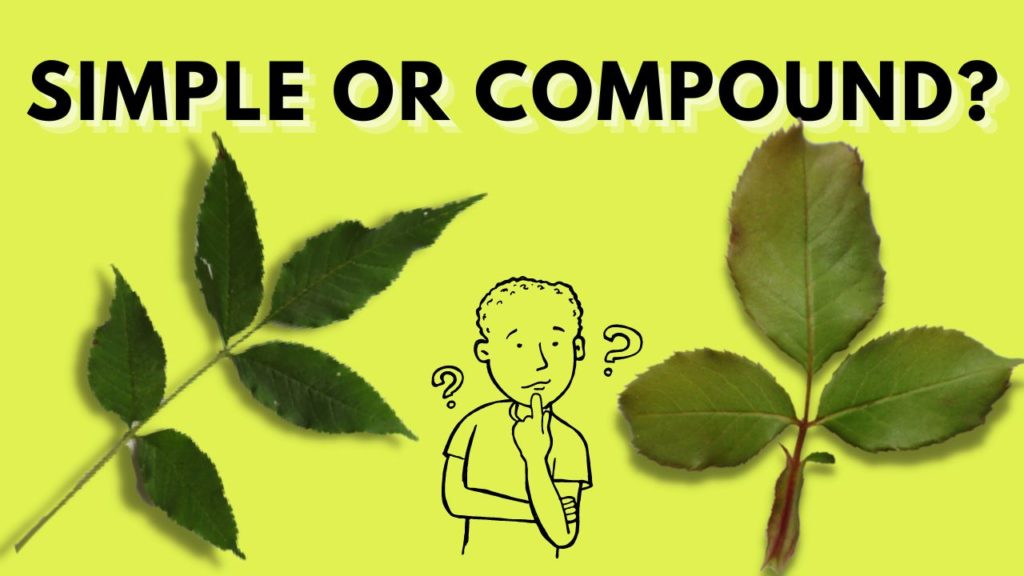So why is that? What don’t all leaves look alike?
There are certain evolutionary explanations for this, especially with respect to the size of leaves and their division. For example, plants growing in crowded tropical forests tend to be more shaded by each other, so they tend to have larger leaves to maximize their sun exposure. On the other hand, plants growing in hot, dry environments such as deserts tend to have smaller, often waxy leaves to minimize water evaporation.
Characterization of leaf types is crucial for classification and identification of plants and for understanding the plant world.
So, how do we categorize leaves?
Firstly, we divide leaves into two categories: simple and compound. A simple leaf has one leaf blade, which might be lobed (such as in many oak trees), but it always comes in one piece. Shapes of simple leaves are very diverse and we’ll get to that later, but the main point to remember is: simple leaf = one undivided leaf blade.


